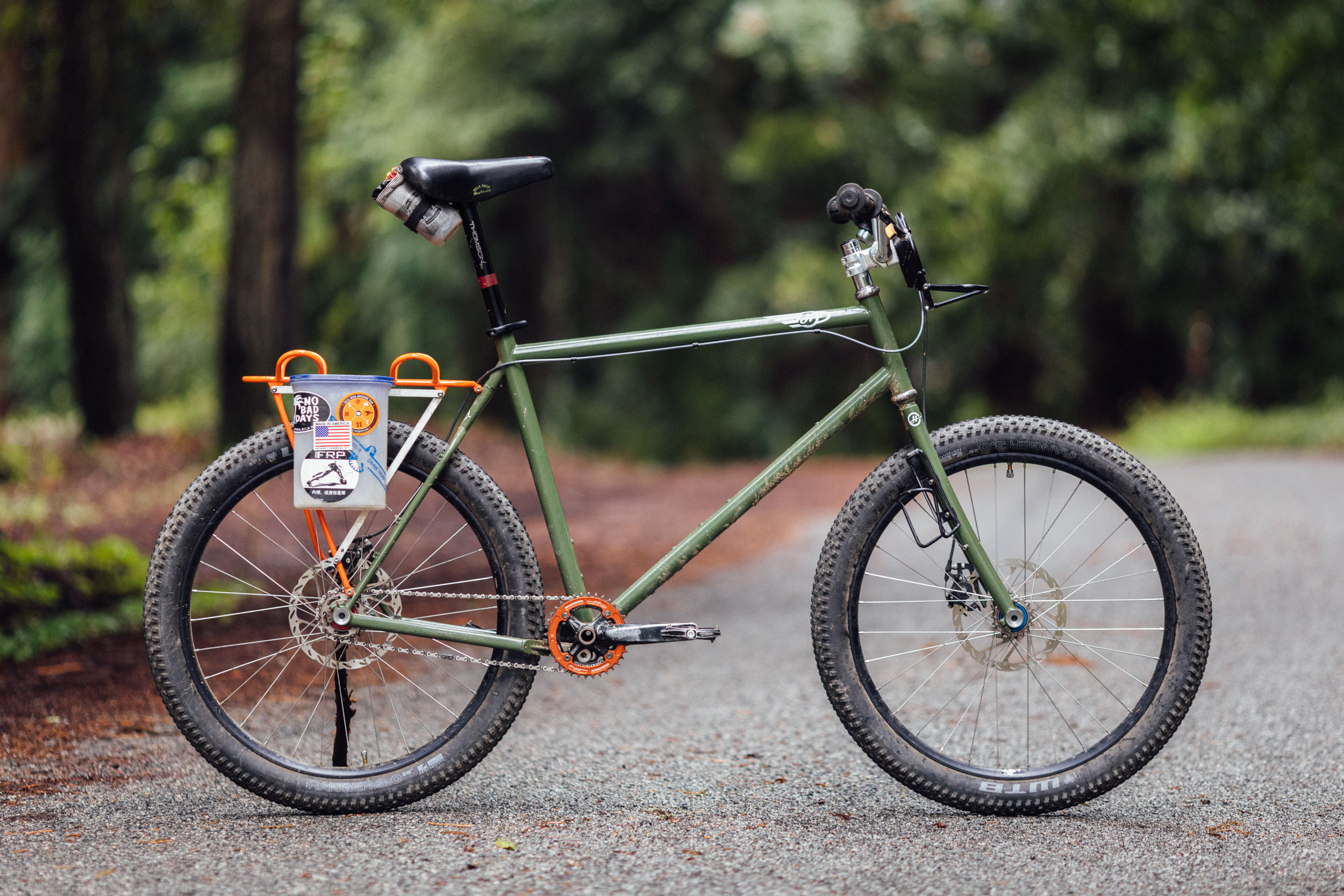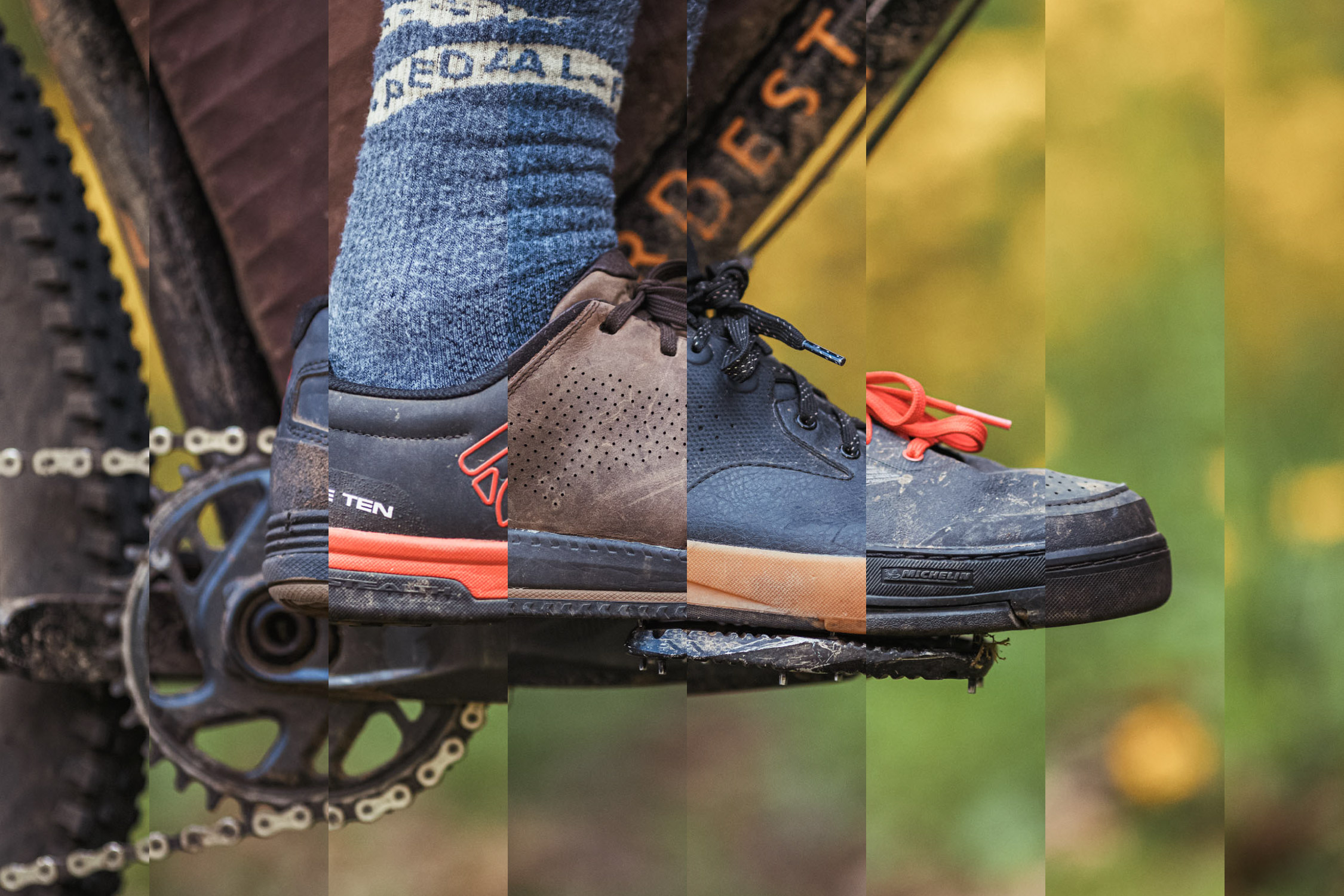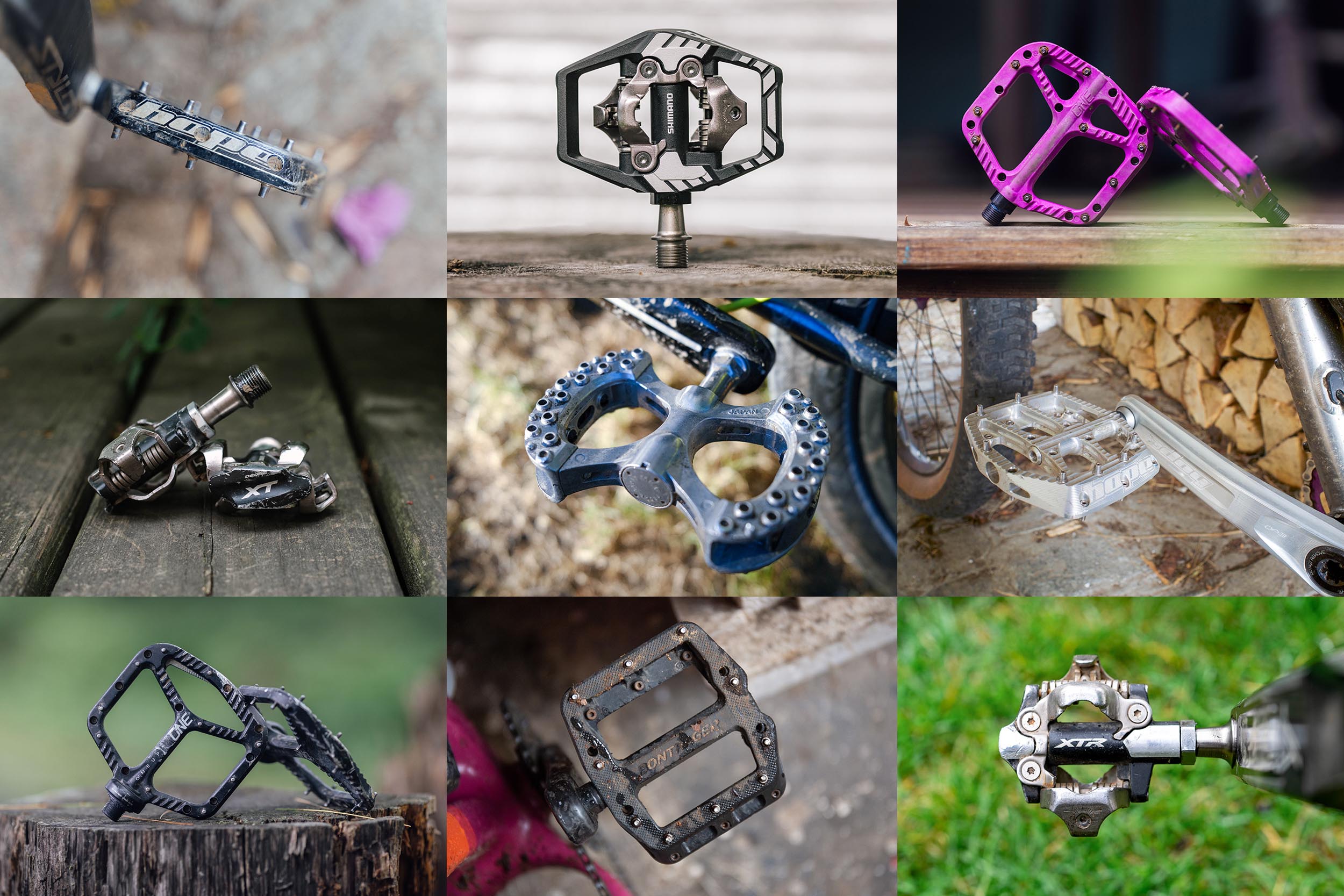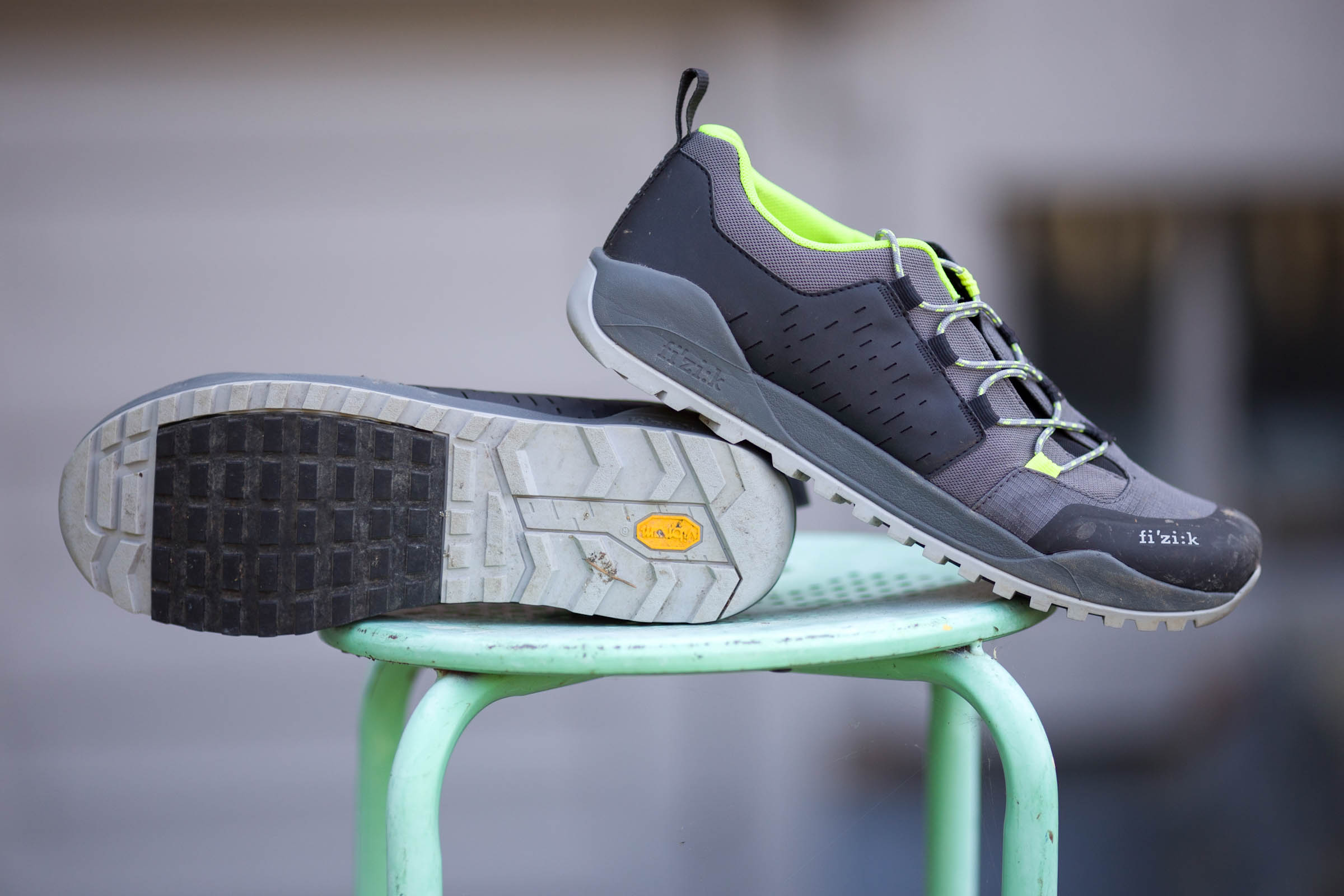Giro Tracker Review: Flat-pedal ATB Shoes?
The Giro Tracker is the brand’s—and maybe the world’s—first all-terrain bicycling flat-pedal shoe. In this long-term review, Logan weighs in on the pair he’s broken in throughout more than 1,500 miles of use while bikepacking, gravel riding, and testing the extent of their capabilities on rough singletrack trails…
PUBLISHED Jun 6, 2023
I wasn’t quite sure what I was getting into with the Giro Tracker. The marketing person who sent them to me last fall succinctly described it as “a flat pedal shoe for bikepacking that you should test.” I assumed that meant it was just another casual mountain bike shoe that’s comfy enough for shuffling around camp or mid-adventure strolling around town. The Tracker was unreleased at the time, and I honestly didn’t even know the model name; I thought it was called the Tack.
It was well after I took this pair of blue Giro Trackers on a few rugged Pisgah trail rides when I learned that they weren’t even for mountain biking. In fact, the Tracker is being marketed as a kind of all-terrain cycling shoe—purpose-built footwear for gravel, bikepacking, and all other types of cycling that fall into the nebulous void between road cycling and mountain biking. Who knew the world needed a flat-pedal ATB shoe? I didn’t, but I’m glad I tried it. Here’s my review of the Giro Tracker after over 1,500 miles of use on bikepacking trips, gravel rides, and—for the sake of science—rough and rugged trail riding on my mountain bike.
ATB Shoes?
Whether you like it or not, brands in the cycling industry are busy conceiving and creating products built precisely for gravel and mixed-terrain riding. These Übermensch components and accessories include everything from gloves to helmets to saddles, all dubbed gravel-specific, adventure-ready, or some other cheeky marketing-forward term. However, there hasn’t yet been a bikepacking/gravel-specific flat-pedal shoe, as far as we know. At this point some of you are probably rolling your eyes and concocting a comment that begins with the words “isn’t this just marketing…”, but I personally think product development for niche cycling activities isn’t a bad thing. It can even be pretty great in some instances. Sure, gravel- or ATB-specific shorts and socks are often ridiculous, and I’m not just talking about their prices, but an ATB-centric flat-pedal shoe is an interesting prospect.
Flat-pedal mountain bike shoes are often judged by fit, comfort, breathability, protection, and how well they grip the pedals. So how about a flat pedal gravel shoe, an ATB (all-terrain bike) shoe, or a bikepacking shoe? Those metrics might not apply in the same ways. Really good pedal grip is critical no matter the shoe, in my opinion, but other characteristics might be adjusted to suit, such as minimizing padding to save weight, using different materials make them quick to dry after getting wet, and prioritizing comfort in certain areas.
That’s not to say good MTB flats can’t accomplish these things, but mountain bike shoes are often overbuilt with thicker outsoles, heftier insoles, and burly padding to offer protection and impact resistance. The Giro Tracker tones that down a little. It clearly takes cues from the Giro Ventana, one of Virginia’s favorite SPD shoes she reviewed in this roundup. On the outset, it has a similar upper with gridded nylon fabric and thermo-bonded polyurethane overlays. But, under the hood, it’s made of lighter materials and a thinner last that’s a departure from the brand’s MTB shoes. They claim its thinner design places the foot closer to the pedal for optimal pedal contact. There might be a little snake oil in that statement, but I found that the Tracker’s minimal construction has a few nice benefits.
Minimalist Comfort
I really appreciate the casual, breezy feel that comes from the lighter nylon upper and Giro’s overall use of less padding and bulk. For reference, my pair of size EU 43 (US 9.5) Trackers weighs 708 grams. That’s only ~20 grams less than my beloved Freerider Pros, but the Trackers feel much lighter and more airy. On that note, their thin nylon upper material doesn’t do much to keep water from entering, but they seem to dry out quickly after a stream crossing or passing shower. And they also breathe quite well, making the Tracker one of the better summer shoes I’ve tried in a while.
Better yet, they’re pretty comfortable while pedaling, even on long days. The biggest trip I took with them was a 750-mile scouting mission for the Eastern Divide Trail across Nova Scotia and New Brunswick. My bike was lost by the airline at the beginning of the trip, and I was delayed in a hotel for a couple days. As a result, I had to make up for lost time and miles once I finally got moving. That meant averaging more than 100 miles per day, sometimes up to 125, which required a lot of time mashing the pedals. I’m happy to report no foot pain or foot cramping issues with the Trackers, a problem I’ve had with other shoes. That’s pretty impressive considering that they’re fairly pliable. They’re also quite comfy to hike and walk around in, although they don’t have as much support as some folks might like. Still, their soles aren’t overly flexy or too stiff, and in my opinion, they offer a nice middle-ground that works on and off the pedals. That said, they got more flexible over time, and after all these miles, they’re significantly more flexy than they were out of the box, a trait common among the flat-pedal shoes I’ve ridden long term.
The Trackers fit me really well, too. I have relatively narrow feet and bizarrely long toes, requiring a wide toe box with cycling shoes. Otherwise, I end up with severe pain or numbness in my toes after a long day. The Tracker has a nice and roomy toe box that maintains a comfortable, solid fit that doesn’t make your feet feel like they’re floating around.
On/Off
That same minimalism translates to the closure and ease of entry/exit. This might have been one of my favorite characteristics of the Trackers, which bests all the other other shoes I’ve tried over the years in this regard. In short, they’re super fast and easy to put on and take off. That’s not something I’ve really thought about before, but when you’re touring with a purpose—aka trying to get somewhere on a schedule—little things that save time are welcome. Also, getting up and out of the tent to pee in the middle of the night doesn’t get much easier.
What’s more, the Tracker’s single L6 BOA and cable lacing does a great job at balancing the pressure throughout the shoe. I think this (and the shoe’s ease of use) can be largely attributed to the molded plastic lace-keepers. They’re well designed and allow the cable to freely slide through them, translating to a quick release and even pressure across the shoe from fore to aft. Giro also integrated a back-up lace loop in each of them, adding a nice failsafe in case of BOA dial failure. Note they also make a cheaper lace-up version for those who are completely opposed to BOA dials.
Pedal Grip
The Tack rubber compound used on the Tracker’s outsole is better than a lot of flat-pedal MTB shoes I’ve tried. In fact, it’s just as sticky as many of my favorite shoes. One of the many ways I judge that is whether the pedals move or come unglued underfoot when spinning. This is a downfall of shoes with inferior rubber compounds, and having to constantly adjust my foot placement irks me when I’m grinding out the miles on a long trip. The Tack rubber seems to do a good job of holding them in place, but there is one caveat: they’re not great for more aggressive mountain biking.
One thing that makes some mountain bike shoes grip pedals better than others on bumpy rides is the midsole and cushion between the foot and outsole, or tread. This is often referred to as the EVA midsole. The cushion and the rubber compound act as a team to provide pedal grip on rough surfaces. The rubber provides the grip, and the midsole acts as a shock absorber when you hit bumps or encounter jarring impacts like a rock drop on a trail. Having the right combination of thicknesses and materials plays a big part in keeping your foot on the pedal when you encounter such impacts. The Giro Tracker has an EVA midsole, but it’s pared down in comparison with true mountain bike shoes. When riding a hardtail on the rough trails here in Pisgah, I had a few “oh shit!” moments when big roots or rock drops were involved and the pedal rotated under the shoe. The Tack rubber is quite sticky, but the lack of proper damping cushion makes these shoes unfit for more aggressive trail riding.
I don’t think this is necessarily a bad thing, however. The section of Eastern Divide Trail I was scouting (EDT Segment 2) is pretty rough. It consists of a lot of primitive tracks shared by ATVs that get pretty rocky and bumpy. I didn’t have any notable sketchy off-pedal moments on that ride. At that pace and type of riding, that wasn’t an issue. For most people who aren’t hitting jumps or ripping through rock gardens, the Trackers have plenty of grip and their lack of big impact absorbing padding won’t be a factor.
The grippy rubber sole translates fairly well to hike-a-bike grip. Just this past weekend, I pushed my bike up a steep, wet, rudimentary trail and noticed how well they did. Without more significant lugs at the toe and heel of the shoe, they fall a little short on rubbly steep hikes, but otherwise they have surprisingly good hike-a-bike grip. Despite this relatively sticky (and theoretically soft) rubber, the soles have held up well over the long haul. As you can see in these photos, there are a couple of pedal pin scars, and I mentioned them getting a little more flexy over time, but I think they could easily see one or two thousand more miles of pushing the pedals.
The Giro Tracker is available from your local Giro dealer for $130, which isn’t a bad value. The Tracker comes in sizes 39-50 for men in three different color options, and they also make a women’s version in sizes 36-43. And if you don’t want the BOA closure, you can get the “Fast Lace” version for $110.
- Model/Size Tested: Men’s Size 43 US (9.5 EU)
- Actual Weight: 708 grams (pair)
- Place of Manufacture: Vietnam
- Price (Men’s): $130 at Backcountry
- Price (Women’s): $130 at Backcountry
- Manufacturer’s Details: Giro.com
Pros
- Super light and airy design
- BOA dial is precise, and smooth cable guides make getting them on and off very fast and easy
- Minimal soles are comfortable to walk around in and still solid enough that they can be ridden all day with no discomfort
- Aesthetic isn’t annoying or over the top
- Tack rubber is pretty grippy, even when just spinning
- Back-up lace loops are a nice failsafe in case of BOA dial failure
Cons
- Thinner insole isn’t cushioned enough for bigger impacts and can cause a sudden loss of pedal grip; not exactly a con, as described above
- Not much padding or protection for the rowdy stuff
- Flat sole doesn’t offer a ton of hike-a-bike grip in loose/steep conditions
Wrap Up
The Giro Tracker has a lot going for it. For one, there simply aren’t many options out there like it, and it definitely isn’t just another flat-pedal mountain bike shoe. It’s a minimal and lightweight shoe that’s surprisingly comfortable on all-day rides and while hiking or just sauntering about. The Tracker has a highly breathable design that’s ideal for long summer days and has also proven to be quite durable. For multi-mode bikepacking, the BOA dial is an excellent touch for being able to quickly put them on or remove them to move fast, get in and out of your tent, or just stretch your feet around camp. They’re pretty grippy, too, and they make a great all-around cycling shoe for a variety of mixed-terrain rides.
Sure, there are plenty of good mountain bike shoes that do a lot of these things well. I’ve recently been impressed with the new Specialized 2FO, for example. However, if you’re looking for a truly specialized shoe for weight, ease of entry and exit, and breathability—specifically for less-than-rowdy MTB pursuits—the Giro Tracker might be precisely what you need. It’s become a favorite of mine and the one that I reach for more than many others in my collection based on the ease of use and comfort.
Related Content
Make sure to dig into these related articles for more info...
Please keep the conversation civil, constructive, and inclusive, or your comment will be removed.































